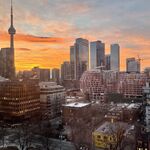11th
Senior Member
You've mistaken me for arcum?Why is that 'dangerous ground to tread on'? How is my advocating for the Boulevard solution on rational grounds in my self-interest? As you've pointed out before, I currently live in Barbados. With the exception of probably moving back to Toronto soon, and paying higher property taxes with less to show for it in the way of transit due to Tory and the Council's transit and road infrastructure choices, I have little to no self-interest. I do care about Toronto, though, and I have seen how fabulous the Waterfront can be when WT is given a chance to do the things it was mandated to do. So I advocate for less costly, higher value, more aesthetically pleasing designs to make Toronto a better place.
You, on the other hand, are extrapolating from your own experience that it will be more difficult for people to drive across the city to see their family and friends. You don't seem to have any other argument for keeping the current status quo. How else am I to take your statements?
I don't think it's the correct wording for it, but "self interest" in this case meaning it does not effect you - as in "do I have to care if I don't use it? or it doesn't effect me?"
Everyone will enjoy a redeveloped waterfront, even those who might drive through this portion of the Gardiner. It's not as though those drivers do not care.
Last edited:




